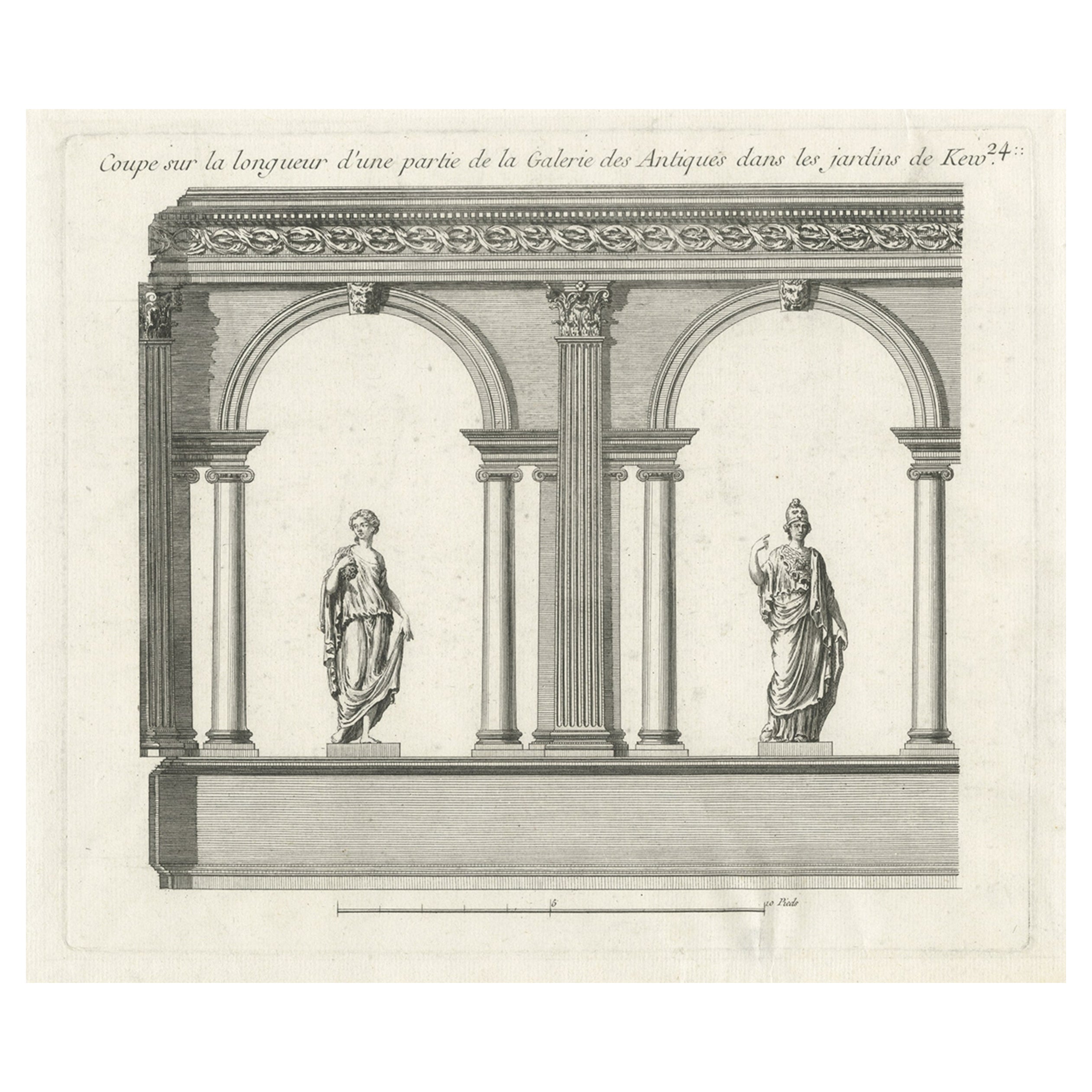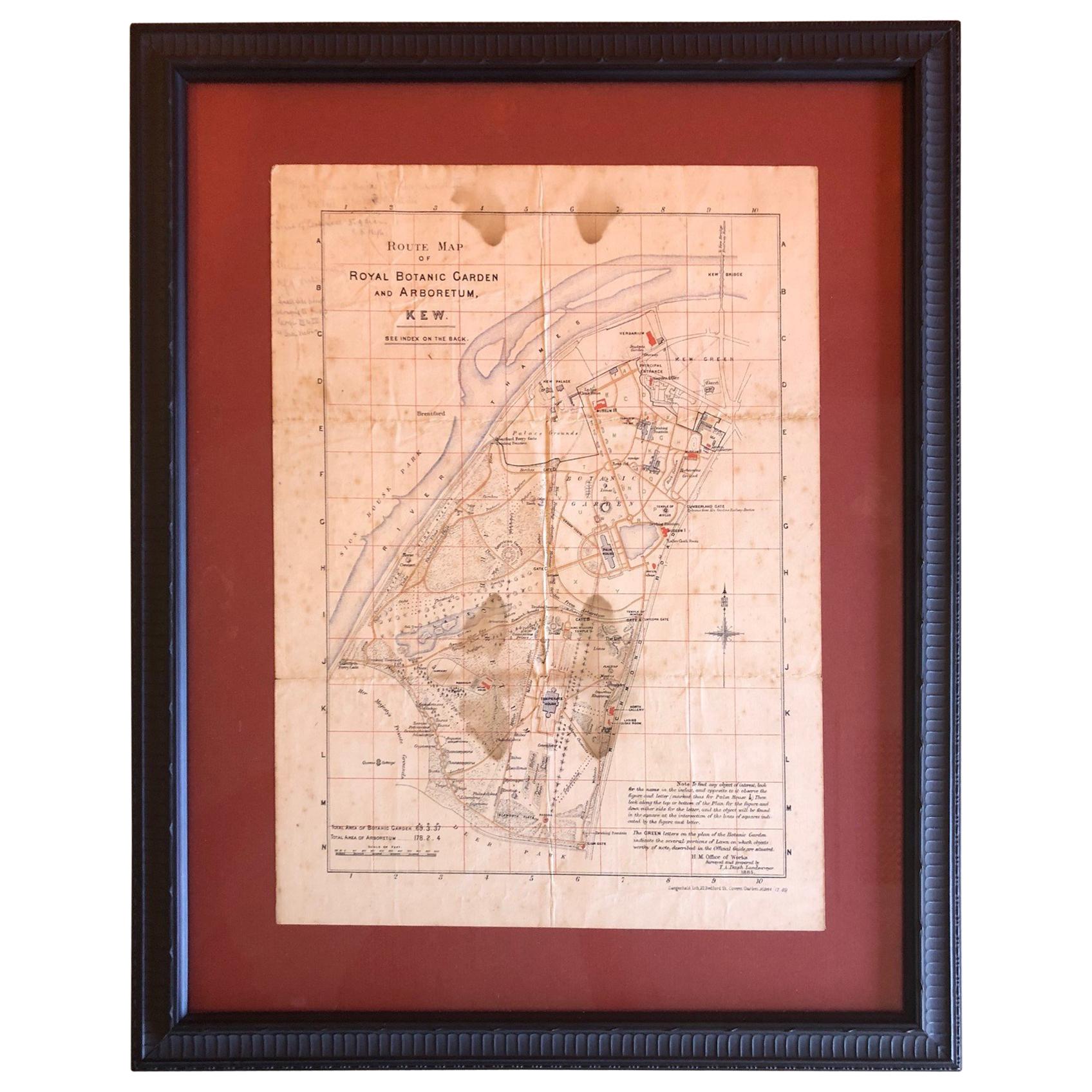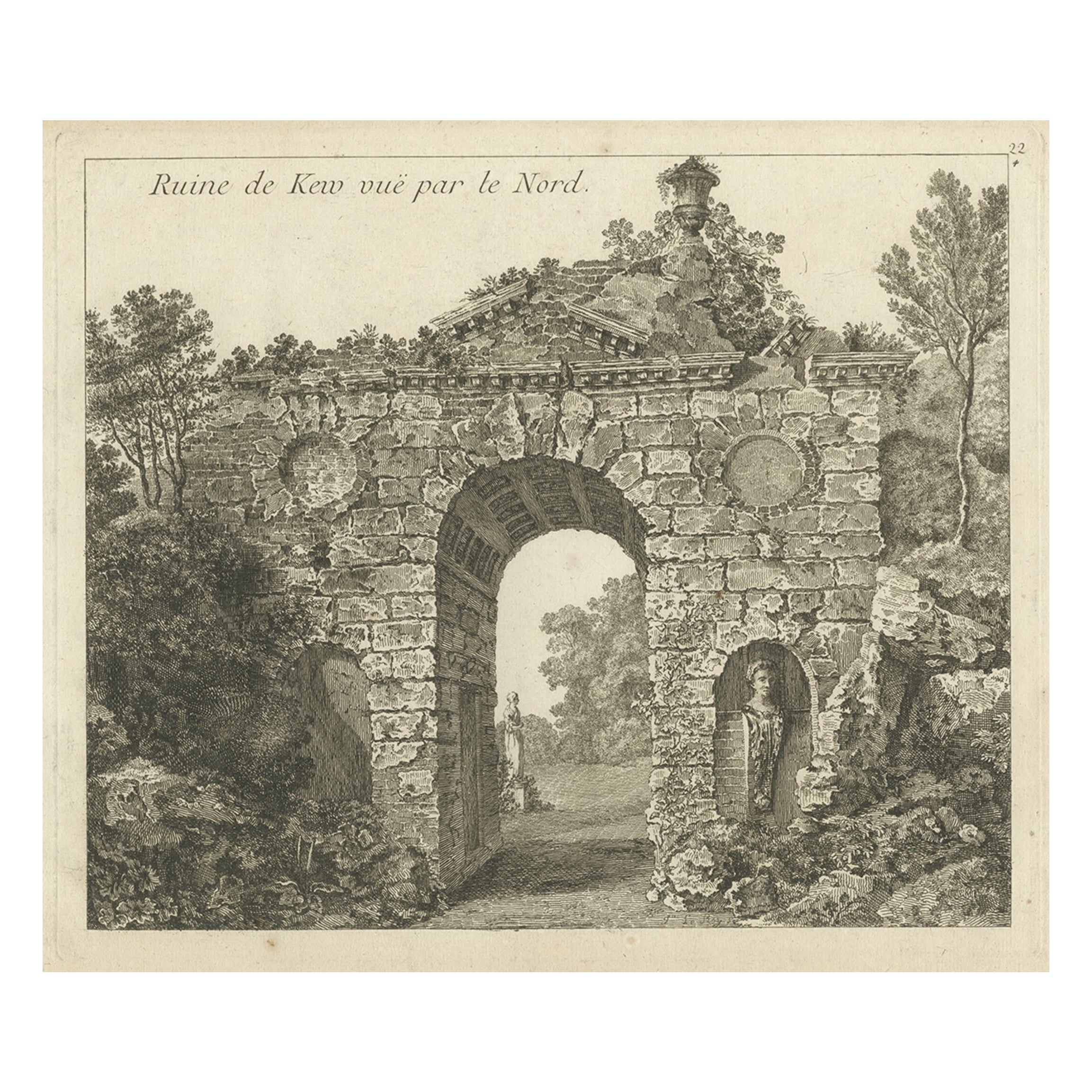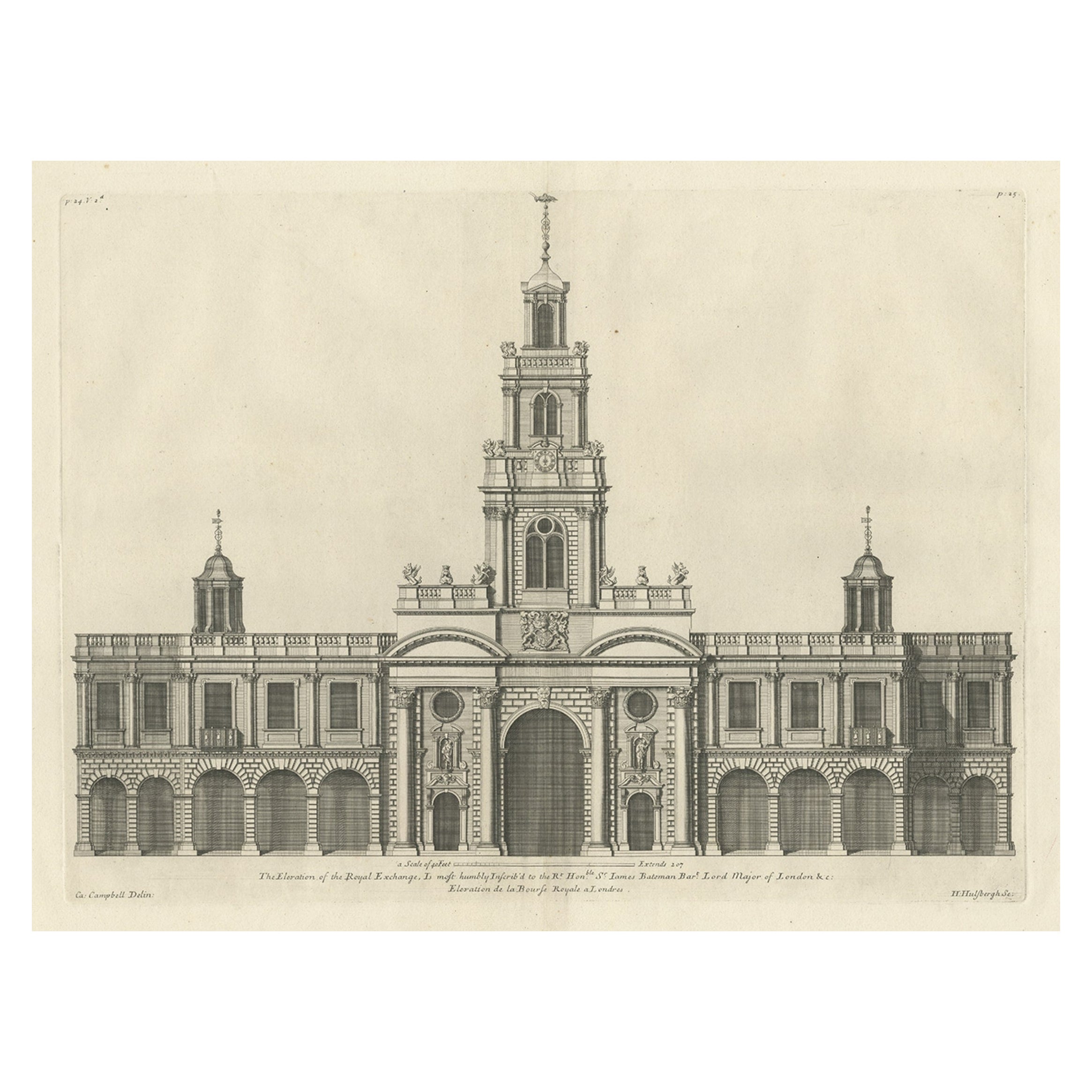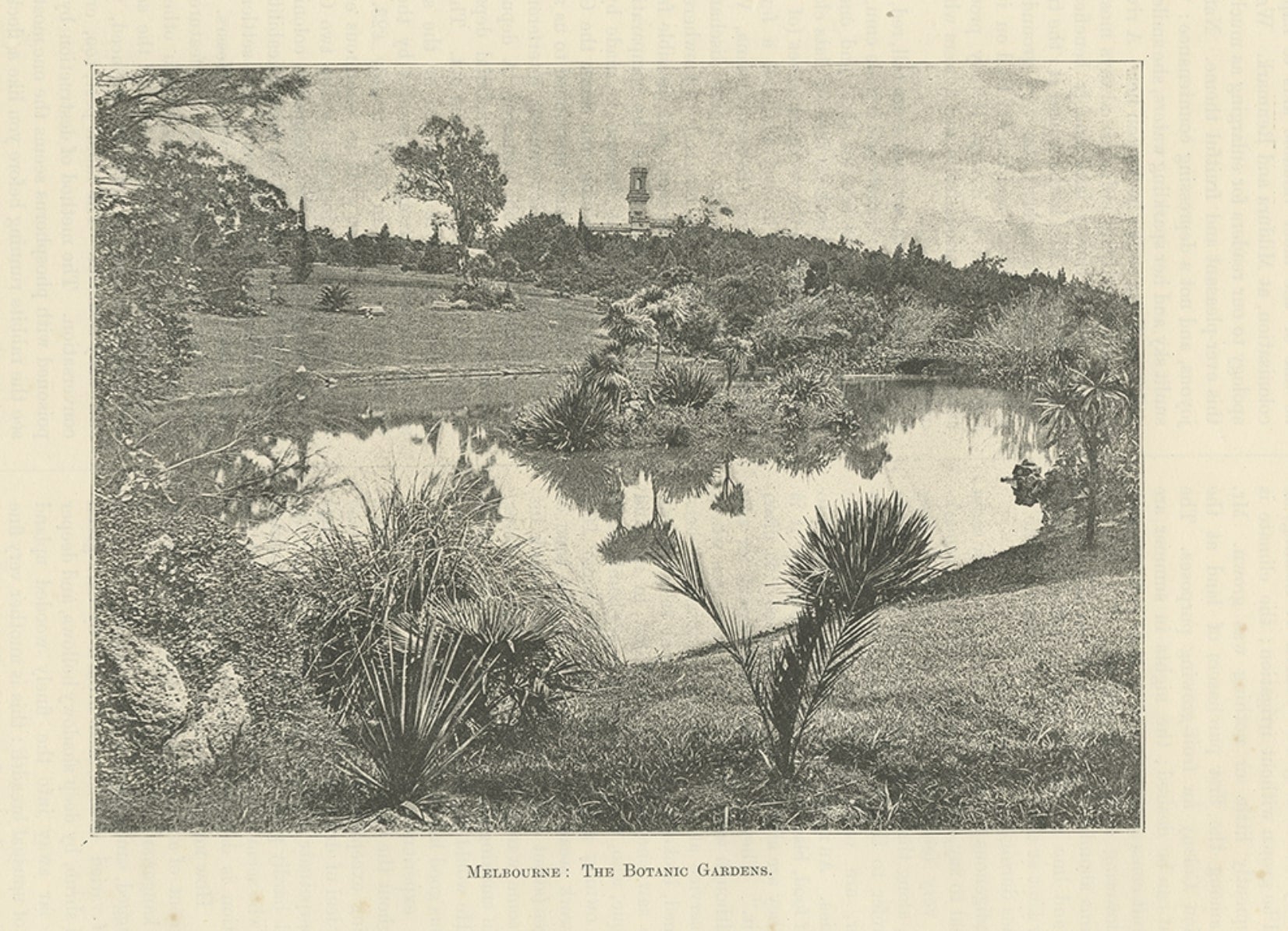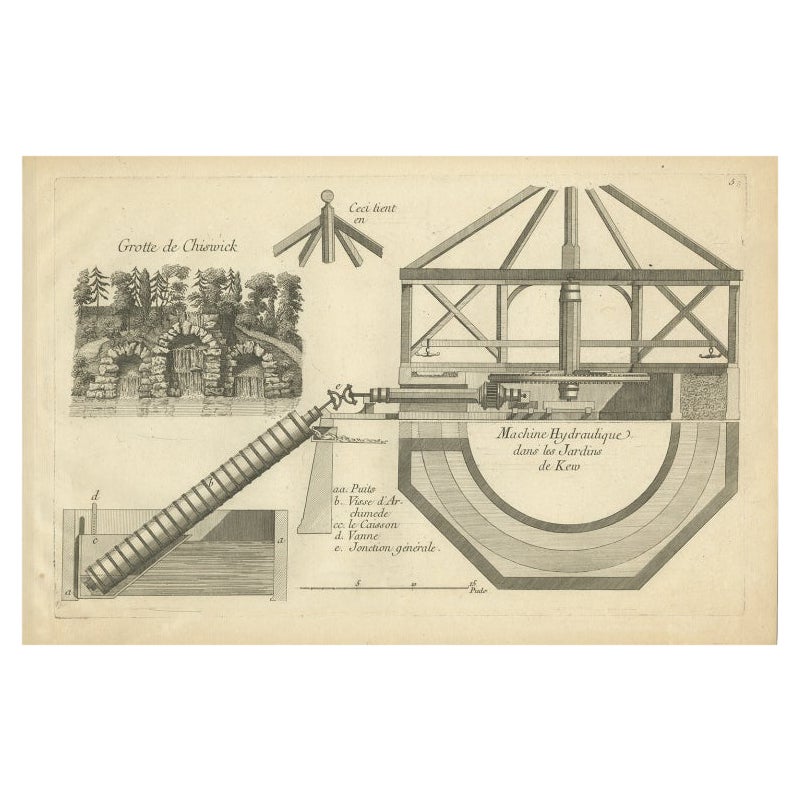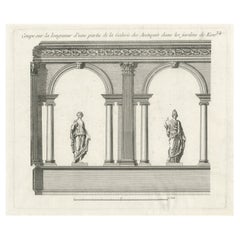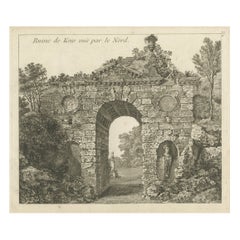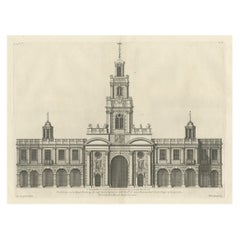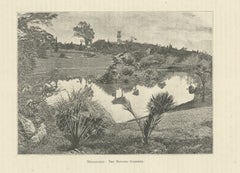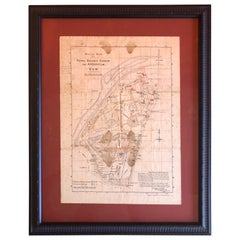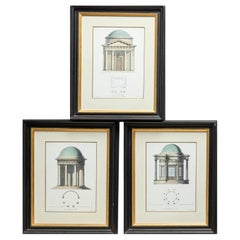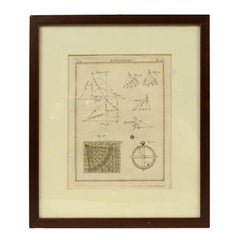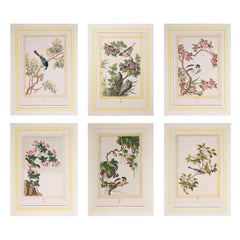Items Similar to Copper Engraving of a Section of the Royal Botanic Gardens, Kew, London, 1776
Want more images or videos?
Request additional images or videos from the seller
1 of 5
Copper Engraving of a Section of the Royal Botanic Gardens, Kew, London, 1776
About the Item
Antique print titled 'Coupe sur la longueur d'une partie de la Galerie des Antiques dans les jardins de Kew'.
Copper engraving showing a section of the Royal Botanic Gardens, Kew. This print originates from 'Jardins Anglo-Chinois à la Mode' by Georg Louis le Rouge.
Kew Gardens is a botanic garden in southwest London that houses the "largest and most diverse botanical and mycological collections in the world". Founded in 1840, from the exotic garden at Kew Park, its living collections includes some of the 27,000 taxa curated by Royal Botanic Gardens, Kew, while the herbarium, which is one of the largest in the world, has over 8.5 million preserved plant and fungal specimens. The library contains more than 750,000 volumes, and the illustrations collection contains more than 175,000 prints and drawings of plants. It is one of London's top tourist attractions and is a World Heritage Site.
Kew Gardens, together with the botanic gardens at Wakehurst in Sussex, are managed by the Royal Botanic Gardens, Kew, an internationally important botanical research and education institution that employs over 1,100 staff and is a non-departmental public body sponsored by the Department for Environment, Food and Rural Affairs.
The Kew site, which has been dated as formally starting in 1759, though it can be traced back to the exotic garden at Kew Park, formed by Henry, Lord Capell of Tewkesbury, consists of 132 hectares (330 acres) of gardens and botanical glasshouses, four Grade I listed buildings, and 36 Grade II listed structures, all set in an internationally significant landscape. It is listed Grade I on the Register of Historic Parks and Gardens.
Kew Gardens has its own police force, Kew Constabulary, which has been in operation since 1847.
Artists and Engravers: The work of Le Rouge is considered the most important engraved work concerning the history of European gardens during the 18th century.
Condition: Good, general age-related toning. Minor wear, please study image carefully.
- Dimensions:Height: 10.83 in (27.5 cm)Width: 16.15 in (41 cm)Depth: 0 in (0.02 mm)
- Materials and Techniques:
- Period:1770-1779
- Date of Manufacture:1776
- Condition:
- Seller Location:Langweer, NL
- Reference Number:Seller: BG-12208-59 1stDibs: LU3054326736512
About the Seller
5.0
Recognized Seller
These prestigious sellers are industry leaders and represent the highest echelon for item quality and design.
Platinum Seller
Premium sellers with a 4.7+ rating and 24-hour response times
Established in 2009
1stDibs seller since 2017
2,419 sales on 1stDibs
Typical response time: <1 hour
- ShippingRetrieving quote...Shipping from: Langweer, Netherlands
- Return Policy
Authenticity Guarantee
In the unlikely event there’s an issue with an item’s authenticity, contact us within 1 year for a full refund. DetailsMoney-Back Guarantee
If your item is not as described, is damaged in transit, or does not arrive, contact us within 7 days for a full refund. Details24-Hour Cancellation
You have a 24-hour grace period in which to reconsider your purchase, with no questions asked.Vetted Professional Sellers
Our world-class sellers must adhere to strict standards for service and quality, maintaining the integrity of our listings.Price-Match Guarantee
If you find that a seller listed the same item for a lower price elsewhere, we’ll match it.Trusted Global Delivery
Our best-in-class carrier network provides specialized shipping options worldwide, including custom delivery.More From This Seller
View AllAntique Print of a Section of the Kew Gardens, London, England, c.1785
Located in Langweer, NL
Antique print titled 'Coupe sur la longueur d'une partie de la Galerie des Antiques dans les jardins de Kew'.
Copper engraving showing a section of the Royal Botanic...
Category
Antique 18th Century Prints
Materials
Paper
$334 Sale Price
20% Off
Antique Print of a Ruin of the Kew Gardens in London, England, c.1785
Located in Langweer, NL
Antique print titled 'Ruin de Kew vuë par le Nord'.
Copper engraving of a ruin of the Kew gardens. This print originates from 'Jardins Anglo-Chinois à la Mode' by Georg Louis le Rouge. Artists and Engravers: The work of Le Rouge is considered the most important engraved work concerning the history of European gardens during the 18th century.
Kew Gardens is a botanic garden in southwest London that houses the "largest and most diverse botanical and mycological collections in the world". Founded in 1840, from the exotic garden at Kew Park, its living collections includes some of the 27,000 taxa curated by Royal Botanic Gardens, Kew, while the herbarium, one of the largest in the world, has over 8.5 million preserved plant...
Category
Antique 18th Century Prints
Materials
Paper
$353 Sale Price
20% Off
Engraving of the Entrance Facade of the Royal Exchange, Cornhill, London, 1725
Located in Langweer, NL
Antique print titled 'The Elevation of the Royal Exchange (..)'.
Old engraving of the entrance facade of the Royal Exchange, Cornhill. This print originates from 'Vitruvius Brita...
Category
Antique 1720s Architectural Models
Materials
Paper
Antique Print of the Royal Botanic Gardens of Melbourne, Australia, c.1890
Located in Langweer, NL
Antique print titled 'Melbourne, the Botanic Gardens'. Old print of the Royal Botanic Gardens Victoria, Australia. This print originates from 'The Aust...
Category
Antique 19th Century Prints
Materials
Paper
Pl. 5 Antique Print of the Hydraulic Machine of the Kew Gardens by Le Rouge, c.1
Located in Langweer, NL
Antique print titled 'Machine Hydraulique dans les Jardins de Kew (..)'. Copper engraving showing the hydraulic system of the Kew gardens and the cave of Chiswick. This print origina...
Category
Antique 18th Century Prints
Materials
Paper
Antique Copper Engraving of Folding Plan of London, Published in 1804
Located in Langweer, NL
This rare map comes originally from the publication: Modern London: Being the History and Present State of the British Metropolis.
It was published in London and Printed for Richard...
Category
Antique Early 1800s Maps
Materials
Paper
$697 Sale Price
20% Off
You May Also Like
Antique Map of the Royal Botanic Garden & Arboretum Kew in London, England
Located in San Diego, CA
A very nice antique map of the Royal Botanic Garden & Arboretum in London, England, circa 1880s. The map itself measures 12" x 16" and is professionall...
Category
Antique Late 19th Century English Prints
Materials
Paper
$900 Sale Price
25% Off
Framed Late 20th C, Temples at Kew Garden, London, Hand Tinted Engravings
By Sir William Chambers
Located in Morristown, NJ
Late 20th C, England, a set of three reproduction prints depicting architectural engravings based on the temples found at Kew Gardens, London. The designs are attributed to Sir Willi...
Category
Late 20th Century English Rococo Prints
Materials
Glass, Wood, Paper
Engraving on Copper Print from the Volume Navigazione Nautical Subject 1790
Located in Milan, IT
Print by engraving on copper plate Tav III TIX fig. 17-22 from the volume Navigazione; with frame 28 x 33. Some calculations are depicted. Very good condition.
Shipping is insured by...
Category
Antique 1790s Italian Nautical Objects
Materials
Paper
18th Century Botanical Prints Engravings, by P.J. Buchoz, 1776
By Pierre Joseph Buchoz
Located in Richmond, London
A rare set of six of exceptional quality 18th century hand-colored engravings
Buchoz, Pierre Joseph. Collection précieuse et enluminée des fleurs les plus belles et les plus curieuse...
Category
Antique Late 18th Century French Louis XVI Prints
Materials
Paper
“The Restaurant of the House of Representatives” Engraving by Harper's Weekly
Located in Colorado Springs, CO
This original wood engraving is titled “The Restaurant of the House of Representatives, Washington, DC.” It was published as a double-page image, in the August 12, 1893 issue of the famous 19th century newspaper Harper’s Weekly. The print was illustrated by Charles Stanley Reinhardt.
The House Restaurant, a unique part of life in the Capitol, has been in the same location since the 1857 Capitol Expansion. Congressional members’ busy work schedule made the availability of food on site a necessity. But the restaurant also served as an informal meeting spot for members to continue conversations and deal making.
This 1893 print illustrates the convivial atmosphere. Details including elegantly dressed tables...
Category
Antique 1890s American Prints
Materials
Paper
1876 "Gettysburg, The Repulse of Longstreet's Assault." Engraving
Located in Colorado Springs, CO
Presented here is an 1876 engraving of John B. Bachelder and James Walker’s Gettysburg. The Repulse of Longstreet’s Assault. The engraved scene depicts the decisive battle on the final day of the Battle of Gettysburg. Researched by the photographer and topographer John B. Bachelder and painted by James Walker, the original painting was created in 1870. This detailed engraving was done by H. B. Hall Jr. and published by James Drummond Ball.
Otherwise called Pickett’s Charge, the battle occurred on July 3, 1863. Pickett’s corp commander, Lieutenant General James Longstreet was placed in charge of the attack despite his hesitations. Longstreet’s central role led to the title of the work, Repulse of Longstreet’s Assault. In an attempt to gain control of an important supply route, nine Confederate brigades charged across three-quarters of a mile of open ground against cannon fire to take Cemetery Ridge from the defending Union Army. Despite their overwhelming numbers, the Confederate forces were repelled with considerable casualties marking not only a decisive victory for the Union, but also the beginning of the slow defeat of Lee’s Army. The furthest the charging forces advanced before being repulsed would forever be known as the “High Water Mark of the Confederacy.” The Confederate army never recovered from the losses at Gettysburg and it effectively ended Lee’s campaign into Pennsylvania.
The engraving gives the perspective from the Union rear, one that encompasses most of the battlefield, from Big Round Top on the left to the northern reaches of Cemetery Ridge on the right. The Confederate lines at Seminary Ridge are in the far distance, partially obscured by bursting shells. The image centers on the main Confederate assault, in the vicinity of what today are known as "The Copse" and "The Bloody Angle." The composition has elemen...
Category
Antique 1870s American Prints
Materials
Paper
Recently Viewed
View AllMore Ways To Browse
Set Of Antique Architectural Prints
Set Four Botanicals
Anglo Botanical
Red Mill Mfg
Ulm Cathedral
Vintage Architectural Model Staircases
Black Metal Magazine Rack
Button In Ceramic
Cab Leather Chair
Card Table Pair
Carlo Ponti Chairs
Carving Knife And Fork
Chair Egypt
Chinese Wall Scrolls
Chippendale Ball And Claw Mahogany Style Furniture
Coffee Table Black Mirror Top
Console Table With Lions
Crystal Glass In A Silver Holder
